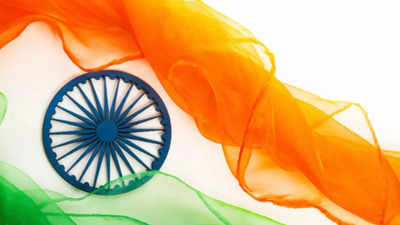Trending
Republic Day of India 2025: History, importance, significance and all you need to know
India celebrates Republic Day annually on January 26, marking the adoption of its Constitution in 1950. The day features grand celebrations including parades, military displays, cultural performances, and the awarding of prestigious honours. It symbolizes India's democratic principles, unity in diversity, and pays tribute to those who fought for its independence.
Every year on January 26, India celebrates one of its most significant national holidays — Republic Day. If you're curious about why this day is so important and how it's celebrated, you’re in the right place. Let’s take a closer look at the history, significance, and everything that makes Republic Day a unique and special occasion in India.
The origin
This highlighted the need for a new framework — something that would truly represent India’s democratic ideals, diversity, and dreams. After years of work, the Indian Constitution was adopted by the Constituent Assembly on November 26, 1949. But it didn’t take effect right away. It was on January 26, 1950, that India officially became a republic and its Constitution came into force. Since then, January 26 has been celebrated as Republic Day — the day India took control of its future.
See More:Happy Republic Day 2025: 51+ Best Republic Day wishes, messages, quotes to share with your friends and family
The significance: Why January 26?
The grand Republic Day celebrations
The parade at Rajpath: Every year, thousands gather at Rajpath in Delhi for the Republic Day Parade, a grand showcase of India’s culture, military strength, and unity. It begins with the President hoisting the national flag, followed by the National Anthem. Then comes the march-past, featuring military units, police forces, and colorful tableaux from each state, highlighting their unique culture and traditions. It's a vibrant celebration of India's diversity and strength.
Military show of strength: The Republic Day parade also features an awe-inspiring display of India’s military might. You’ll see tanks, missiles, fighter jets, and soldiers marching in perfect unison. This show of strength serves as a reminder of India’s readiness to defend its borders and its commitment to peace.
Awarding of Gallantry Awards: The President also awards the Gallantry awards on Republic Day to honour citizens who have made extraordinary contributions to society and the nation.
Cultural performances: The festivities aren’t just about military parades. Republic Day celebrations also feature vibrant cultural performances by school children and artists from across the country. These performances showcase the diversity of India’s traditions, music, dance, and art forms. The colourful, elaborate performances are a treat for the eyes and hearts alike.
The flypast: As the grand parade nears its end, the sky above Rajpath is filled with the roar of fighter jets performing a flypast. These jets leave behind colourful trails of smoke in the national colours — saffron, white, and green — creating a spectacular visual that has become an iconic part of Republic Day celebrations.
The importance of Republic Day
National unity: India is a country with incredible diversity — diverse languages, cultures, religions, and traditions. Republic Day is a time to celebrate the country’s unity in diversity. The Republic Day Parade and celebrations bring people from different walks of life together to honour their shared identity as Indians.
Patriotism and pride: Republic Day is a moment for all Indians to unite and take pride in their nation. The sight of the tricolour flag waving in the wind, the powerful notes of the National Anthem filling the air, and the sight of military personnel marching with perfect precision all evoke strong feelings of patriotism and national pride.
Remembering sacrifices: Republic Day is a time to pay tribute to the freedom fighters, soldiers, and all those who fought for India’s independence. It’s a reminder of the values they fought for — freedom, justice, and equality — which still guide the nation today, ensuring their sacrifices are always honoured and remembered.
See More:Republic Day of India best speech & essay ideas: Republic Day speech in English, long and short speeches for students
How people celebrate Republic Day across India
As we look ahead to Republic Day 2025, it's a moment to reflect on India’s journey since 1950. From a young, independent nation to a global leader with a growing tech industry and strong democracy, India has come a long way. But there’s still more to achieve. Republic Day reminds us of the values — freedom, justice, and equality — that continue to guide the nation forward.
End of Article
FOLLOW US ON SOCIAL MEDIA
Visual Stories
Tired of too many ads?go ad free now





















